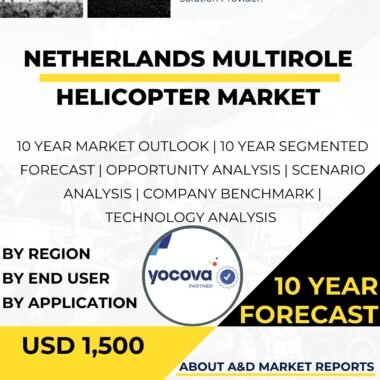Description
The UK unmanned battlefield logistics and support systems market is a critical and dynamic sector that plays a pivotal role in enhancing the country’s military capabilities and streamlining battlefield logistics and support operations. Unmanned battlefield logistics and support systems are advanced technologies and platforms designed to automate and optimize the delivery of essential supplies, equipment, and services to military units operating in the field. These sophisticated systems offer significant advantages in increasing operational efficiency, reducing the risks faced by military personnel, and ensuring timely and reliable support in challenging and hostile environments.
One of the primary areas of focus in the UK unmanned battlefield logistics and support systems market is the development and procurement of cutting-edge unmanned systems. The UK government, defense industry, and private sector invest significant resources in acquiring advanced unmanned systems that can meet diverse operational requirements and address emerging challenges faced by the country in the field.
Moreover, the UK unmanned battlefield logistics and support systems market address the use of these systems across various defense applications. Unmanned logistics systems are employed by the UK’s armed forces for battlefield resupply, casualty evacuation, reconnaissance, and communication support. Additionally, they serve as critical platforms for humanitarian assistance and disaster relief missions, demonstrating the versatility and significance of unmanned systems in addressing a wide range of contingencies.
Furthermore, the unmanned battlefield logistics and support systems market in the UK encompass the integration of advanced technologies into these platforms. Modern unmanned systems incorporate innovations in autonomous navigation, artificial intelligence, robotics, and sensor integration, ensuring they can operate effectively and adapt to dynamic and challenging battlefield conditions.
The integration of unmanned battlefield logistics and support systems into the UK’s defense market has also been driven by the need for increased operational flexibility and agility. Unmanned systems offer the UK the ability to extend the reach of its military forces, reduce the logistical burden on personnel, and enhance situational awareness and decision-making capabilities in the field.
Additionally, the unmanned battlefield logistics and support systems market in the UK address the importance of interoperability and joint operations. Unmanned logistics systems must seamlessly integrate with other military assets, command and control systems, and information networks to enable effective data sharing, coordination, and synchronization of operations.
The UK unmanned battlefield logistics and support systems market is characterized by continuous innovation and advancements in unmanned technology. Manufacturers and developers are continually exploring new applications for unmanned systems, as well as improving their range, payload capacity, and autonomy to meet the demands of modern battlefield logistics and support operations.
Moreover, the unmanned battlefield logistics and support systems market in the UK are influenced by the importance of training and expertise. Operating unmanned systems effectively requires skilled operators, logistics specialists, and maintenance personnel with a thorough understanding of system capabilities, mission planning, and risk management.
The deployment of unmanned battlefield logistics and support systems requires careful consideration of strategic and operational factors. The UK must assess the potential roles and missions for these systems in the context of its overall defense strategy, military readiness goals, and operational requirements.
The UK unmanned battlefield logistics and support systems market faces several challenges. One significant concern is the need for continuous investment in research and development to stay at the forefront of unmanned technology. As unmanned systems evolve and adversaries employ advanced countermeasures, the UK must remain innovative to ensure its unmanned logistics and support systems remain effective and capable of supporting military operations in complex and contested environments.
Additionally, the unmanned battlefield logistics and support systems market must address the challenge of cyber and electronic warfare threats. As unmanned systems become more interconnected and reliant on information networks, the UK must invest in robust cybersecurity measures to protect these systems from unauthorized access and potential disruptions.
Moreover, the deployment of unmanned battlefield logistics and support systems requires strict adherence to ethical and legal considerations. The UK must ensure that the use of unmanned systems complies with international laws of armed conflict, human rights principles, and ethical guidelines.
In conclusion, the United Kingdom’s unmanned battlefield logistics and support systems market is a critical and dynamic sector that offers a wide range of capabilities to support military operations and streamline battlefield logistics and support operations. Unmanned systems provide significant advantages in enhancing operational efficiency, reducing risks to military personnel, and ensuring timely and reliable support in challenging and hostile environments. Continuous research, development, and innovation are vital to address challenges and harness the full potential of unmanned battlefield logistics and support systems to support and strengthen the UK’s military capabilities and operational effectiveness in the future.




